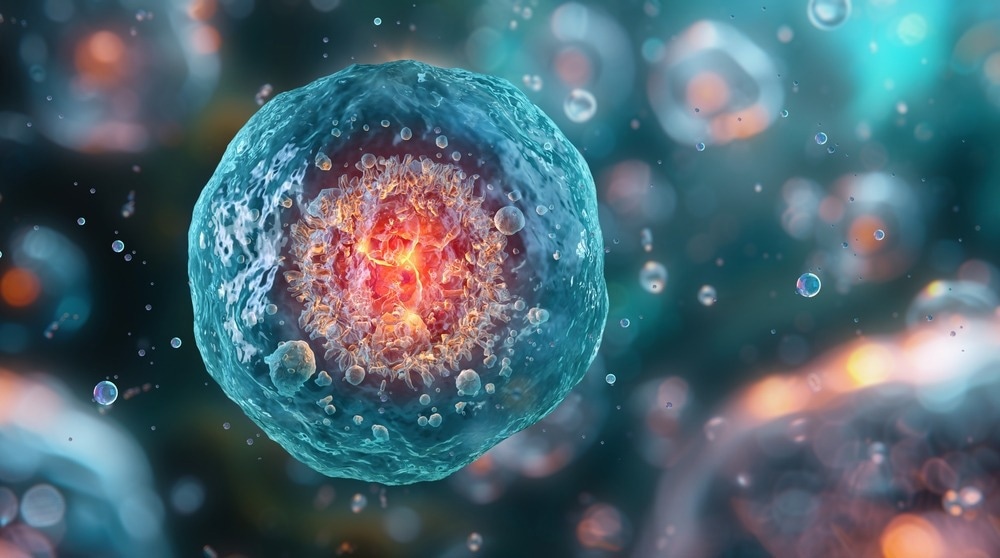Reviewed by Danielle Ellis, B.Sc.Sep 26 2024
Researchers at the Johns Hopkins University School of Medicine have conducted a comprehensive analysis of the variations present in human stem cells. This study sheds light on how the unique “developmental dance” at the molecular level within an individual's cells can shape the formation of the brain and the body.

Image Credit: Corona Borealis Studio/Shutterstock.com
The findings from this research further understand the origins and implications of cellular variation in people, which could potentially lead to advancements in the design of personalized therapeutics and methods for rebuilding damaged or diseased human organs.
The study, published in the journal Stem Cell Reports, utilized human induced pluripotent stem cells (iPSCs)—a type of stem cell comparable to the cells found in the early stages of embryonic development and able to differentiate into various tissue types.
By studying pluripotent cells from multiple donors, the researchers were able to elucidate how both genetic and epigenetic (non-nuclear DNA) factors contribute to the individual variation observed in the early stages of brain development.
The entirety of each individual human body is created from a single cell, and as cells of the developing embryo begin to divide, they perform genetically programmed choreography to construct the new human.”
Carlo Colantuoni, Ph.D., Assistant Professor, Departments of Neurology and Neuroscience, Johns Hopkins University
The study conducted by researchers at Johns Hopkins University and Yale University has revealed that while the fundamental developmental stages are consistent across the human population and the animal kingdom, there are unique molecular patterns and gene expression traits that modify the conserved human developmental steps, leading to individual variations.
The researchers employed a technique known as “cellular reprogramming,” which involves reverting mature cells to their embryonic pluripotent state. This process, which was recognized with a Nobel Prize in 2012, was used to transform adult human skin cells into induced pluripotent stem cells (iPSCs). These iPSCs possess the ability to differentiate into any cell type found in the human body.
Researchers allowed iPSCs to grow and interact without any constraints, enabling the cells to unveil their inherent characteristics and individuality. By employing RNA sequencing, which analyzes the expression levels of various genes, the researchers gained a comprehensive molecular understanding of cellular activities.
Furthermore, by integrating the RNA data from the iPSCs with data from developing mouse embryos, the researchers mapped the variations observed in the donors' cells onto the broader landscape of mammalian development.
This approach allowed the researchers to identify systematic differences in how individual human cells navigate the early stages of development, a phenomenon that was also observed in publicly available data from 100 human stem cell donors.
The RNA data analysis revealed two distinct patterns or rhythms in the developmental process. The first pattern was observed consistently across all individual donors, delineating substantial modules responsible for generating various components of the human anatomy, including the brain, heart, and liver.
In contrast, the second pattern was more nuanced, relatively recent in evolutionary terms, and present solely within the cells of specific individuals, irrespective of the cells' ultimate function.
The study revealed that the distinct patterns observed in the choreographed development of the cells were not limited to the laboratory-observed cells but were also present in the mature cells of the donors' bodies. The researchers suggest that these variations in cellular development, unique to each individual, influenced the developmental trajectories of the donor cells during the early stages.
Furthermore, the scientists propose that their findings not only demonstrate the unique developmental pathways of an individual's cells but also suggest that these cells may harbor information about a person's health status and disease risk over their lifetime. Colantuoni suggests that these insights could potentially lead to more personalized approaches in regenerative medicine, offering greater precision.
We advocate studying induced pluripotent stem cells and their derivatives to understand each patient’s risk for complex disease and specific treatments that will be most effective for that individual. We see a future in which a patient’s traditional medical history, genome sequence, and living cells are routinely used together to diagnose and customize treatment for patients.”
Carlo Colantuoni, Ph.D., Assistant Professor, Departments of Neurology and Neuroscience, Johns Hopkins University
Colantuoni suggests that researchers are in the early stages of unveiling the precise molecular processes responsible for variations in human cellular development. To comprehend the long-term health implications of an individual's developing cells following their unique rhythms, more studies with larger and more diverse donor populations are required.
Source:
Journal reference:
Kim, S.-K., et al. (2024) Individual variation in the emergence of anterior-to-posterior neural fates from human pluripotent stem cells. Stem Cell Reports. doi.org/10.1016/j.stemcr.2024.07.004.